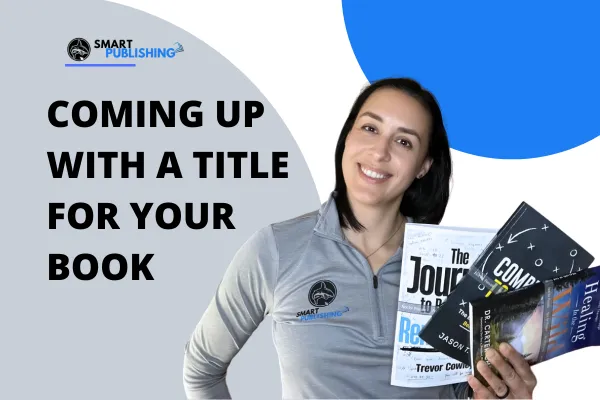
Coming Up with a Title for Your Book: Tips for Nonfiction Authors
Coming Up with a Title for Your Book: Tips for Nonfiction Authors
By Renée Lautermilch, Chief Editor at Smart Publishing
Originally shared on The Smart Publishing Impact Series, Episode 12
Coming up with a book title sounds simple—until you try to do it. If you’ve ever found yourself staring at a blank screen, unsure how to name your nonfiction book, you’re not alone.
In Episode 12 of The Smart Publishing Impact Series, I dive into one of the most important parts of the publishing process: creating a title (and subtitle!) that actually works. Whether you’re just getting started or are in the thick of revisions, your book’s title can make or break how potential readers find—and connect with—your message.
Let’s break it down.
Why Nonfiction Books Need Both a Title and a Subtitle
Nonfiction titles serve two jobs:
The Main Title – Think of this as your brand. It can be creative, catchy, and even trademarkable if you turn your book into a series. Examples include The One-Hour Author or Healing in the Wild—strong, memorable titles that have room to grow into full series or platforms.
The Subtitle – This is where the clarity comes in. A subtitle should clearly explain what the book is about and who it’s for. It helps your reader know instantly whether your book is for them—without needing to read the full description.
Example:
Main Title: Compete to Live
Subtitle: The Every Man’s Playbook to Beating Depression
The subtitle tells you exactly what to expect—and who the book is for. That clarity can be the difference between someone scrolling past or clicking “Buy Now.”
How People Shop for Books (and Why That Matters)
Most book shopping happens online. Readers quickly scan covers, titles, and subtitles to decide if they want to learn more. Your book needs to stop the scroll.
Here’s the path of attention:
Cover – Visually grabs attention (yes, invest in a professional designer!)
Main Title – Intrigues and draws readers in
Subtitle – Confirms the book’s value and relevance
If your subtitle doesn’t clearly communicate what the book is about, most readers won’t even click to read the description. In today’s fast-paced digital world, you only get a few seconds to make an impression.
What Makes a Strong Subtitle?
Here are a few key qualities of a great subtitle:
Clarity and Specificity – Say what the book is about, clearly and simply.
Audience Focused – Indicate who it’s for, when possible.
Keyword-Rich – Use terms your readers might search for (this helps with visibility on platforms like Amazon).
Benefit-Oriented – Highlight the result or transformation the reader will get.
Concise – One sentence max. Keep it punchy and digestible.
Non-Duplicative – Don’t repeat words from the main title.
Subtitle Starters That Work
If you’re feeling stuck, here are some common subtitle structures that help communicate value fast:
A Simple Guide to…
The Proven System for…
X Steps to…
Your Blueprint for…
The Complete Playbook to…
These frameworks imply structure, clarity, and actionable advice—all things nonfiction readers crave.
Real-Life Examples from Our Authors
Healing in the Wild
Subtitle: Overcoming Trauma Through Outdoor Therapy
→ Clear subject matter and emotional draw.The One-Hour Author
Subtitle: A Simple Guide to Writing and Publishing on a Busy Schedule
→ Communicates both process and target audience.
Final Thoughts
Your book title and subtitle work together as a team. The title gets attention. The subtitle makes the sale. Put thought into both, and you’ll create a compelling reason for readers to learn more—and ultimately, read your book.
Need help crafting your title or subtitle? That’s exactly the kind of thing we help authors with at Smart Publishing. Check out our blog and free resources, or reach out directly—we’d love to support your publishing journey.
Ready to publish your book the smart way?
👉 Explore our self-publishing course
👉 Connect with us on Facebook
And as always—
Keep writing your story. The world needs your voice.
